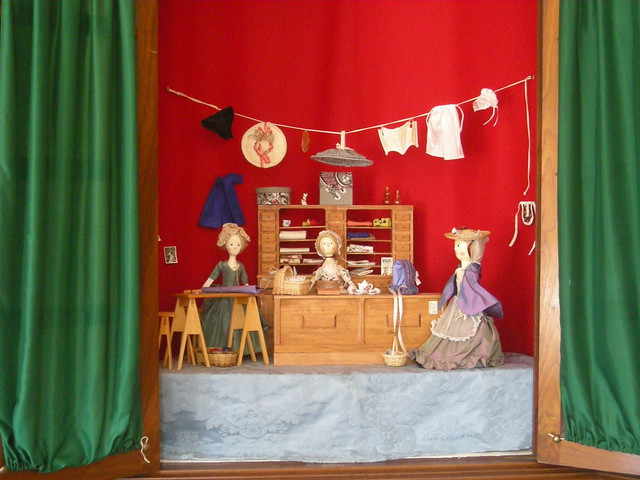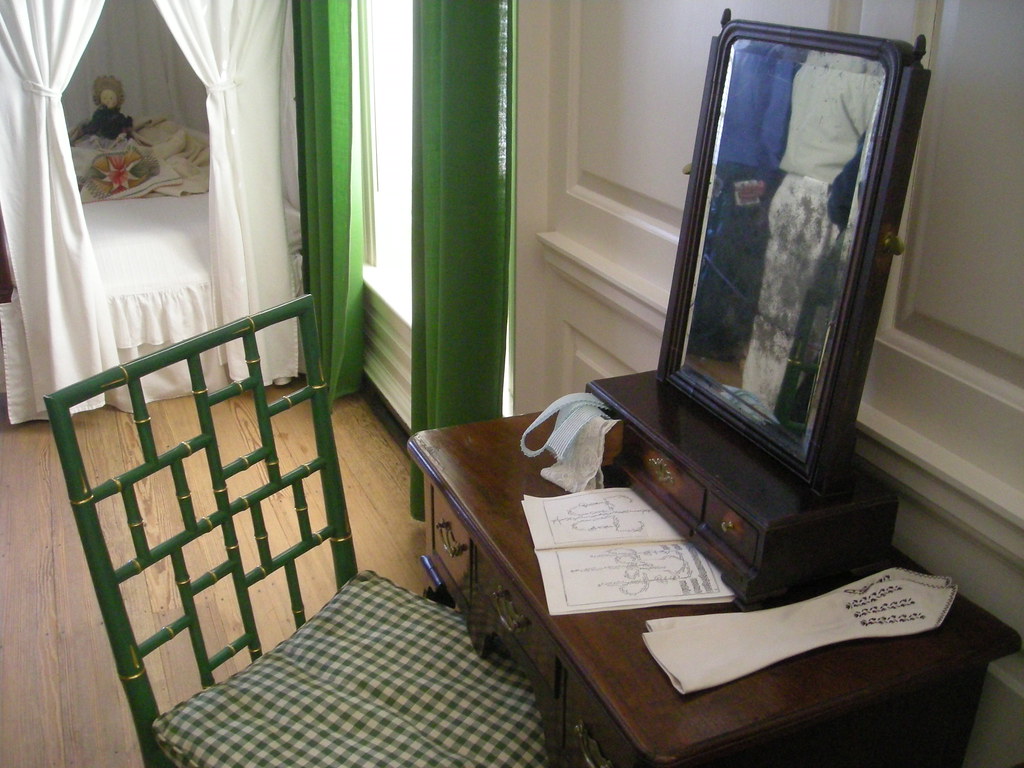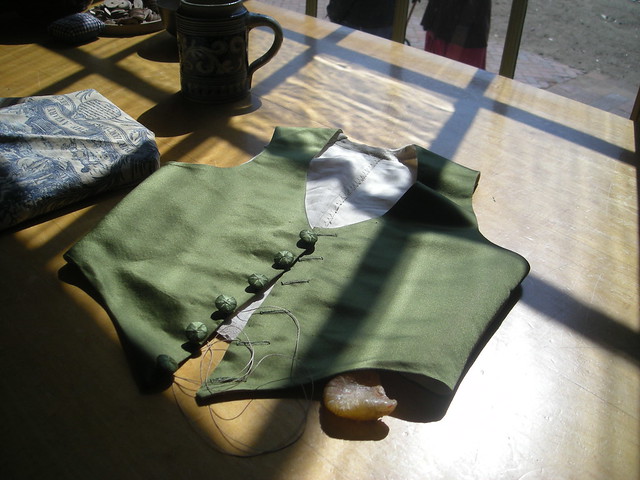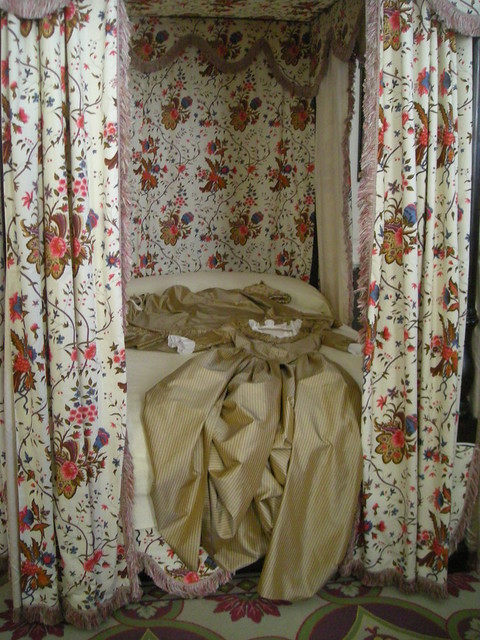Day Two
The miniature milliner's shop on display at the Margaret Hunter shop,
which features more than a dozen pint-sized accessories.
Today was the first of two full days of lectures. CW's Linda Baumgarten (of Costume Close-Up and What Clothes Reveal fame) opened the morning with an introduction to the accessories held in the collections of Colonial Williamsburg. Many were examples drawn from the new exhibit, "Fashion Accessories from Head to Toe," and it added an extra special dimension to that experience to hear the exhibition's curator discuss some of the items from her meticulously informed perspective. Her explanation of her approach to studying and understanding historic accessories was accompanied by a series of superb close-up views of the items, permitting us rare peaks at angles and details impossible to see through the glass of the museum display. If you're unable to visit the museum in person, many of the items can be seen in the "Historic Threads" online exhibit here.
Accessories espied in use around CW: a bedroom at the Governor's Palace.
Phil Dunning's talk followed with a case study of accessories and textile fragments recovered from a 1690 shipwreck. His contribution offered a fascinating glimpse at one process of recovery available to historians, curators, and researchers: the use of archaeological objects to enhance our understanding of how, where, and why accessories were used in the past. He even brought with him all the way from Canada a selection of the recovered late seventeenth-century items, eliciting a series of "ooooos" and "ahhhhhs" from the enthralled audience.
The afternoon continued with a tremendously entertaining contribution from Mark Hutter (CW's journeyman tailor) and Erik Goldstein, curator of mechanical arts and numismatics at CW. In a friendly bantering exchange, the two gentleman offered an outline of the use and production of men's accessories (or more appropriately "accoutrements" and "toys," which Mark explained were the terms current in the eighteenth century for such fashionable objects). From sleeve buttons and walking sticks to "hard toys" (small metal items like keys and seals) and the etiquette of hats, the lecture featured a fantastic collection of period prints and paintings that helped to bring the accompanying antique pieces to life.
The green silk waistcoat that forms part of the riding habit we saw
in progress at the milliner's shop yesterday.
D.A Saguto, CW's master boot and shoemaker, closed the day with a timeline overview of the development of footwear from the time of ancient Rome to the early nineteenth century. With expert detail, he addressed the changes in production techniques and fashionable preferences that contributed to the evolution of one of our favorite accessories. The lecture closed with a show-and-tell of reproduction shoes made by Al and the staff at CW (and yes, he even brought a red leather pair, *sigh*).
A silk gown displayed at the Governor's Palace.
It's been a busy day, and I'm thoroughly enjoying the chance to meet and mingle with fellow costumers - amateur and professional - museum experts, and enthusiasts drawn for all manner of reasons to an interest in this unique and fascinating topic. It's been especially fun discovering the faces behind many of the online presences of the historic costuming world. If only this could last longer than just two short days because there is so much to see, so many people to meet, and way too much to learn in too brief a time! Check back in tomorrow night for day three!





The "friendly bantering" program for the guy stuff sounds like it was really creative in form of presentation and fun! Since I know the tailor I'd have liked to have seen that one! No wonder you are tired...all that input! Sounds like you are having lots of fun! Thanks for sharing! All the programs sound great.
ReplyDeleteLaurie